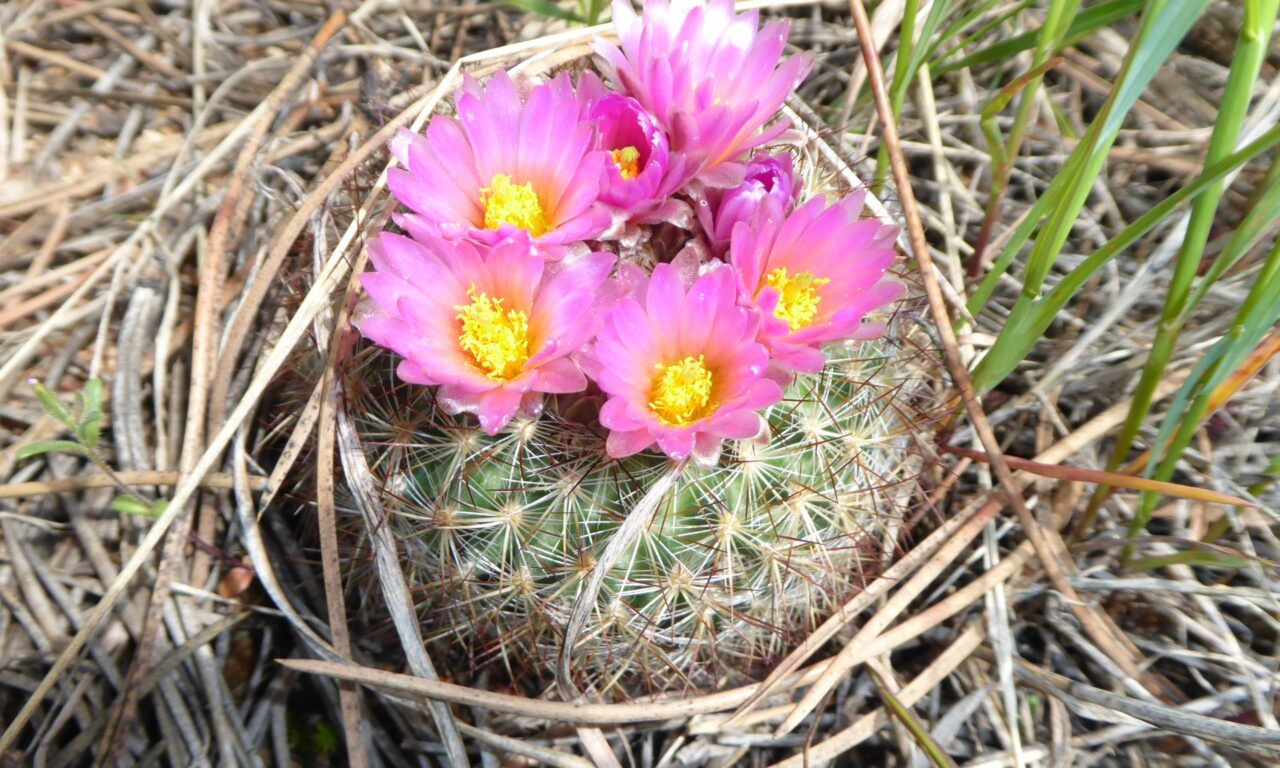Among the roughly 1,500 kinds of plants that grow in Boulder County, very few fight back. Cacti — or is it cactuses? — are the exception. (Either word is grammatically correct.) Cacti are desert-adapted and evolved to protect themselves from munching creatures seeking moisture and sustenance from the succulent stems.
These stems swell with available water and shrink in drought, or to maximize winter water conservation. The stems have a waxy surface to help with moisture retention. And the roots of cacti are numerous and widespread, many of them shallow, enabling the plant to soak up moisture quickly from a brief downpour.
Cactus leaves are reduced to spines, and spines do not absorb water but direct small droplets to trickle stem-wards if there is dewfall or rain. This is an efficient way to reduce water loss through transpiration that the plant would face if it had “normal-sized” leaves spread in intense sun. The fleshy stems are green, that’s where photosynthesis — the food production using chlorophyll and sunlight — takes place.
The ouch effect of spines is substantial. If you accidentally place a hand or sandaled foot carelessly in a wildflower meadow or if you inadvertently park yourself on a prickly tuffet at a picnic, you’ll not soon forget it. The pain is frequently delivered as a double whammy. First comes a sharp poke from a sturdy spine. Second follows the itch from a cluster of brownish fuzzy glochids (minute, barbed bristles) growing around spines, that detach easily and embed in your skin. Spines are easy, if painful, to remove. Glochids are a challenge. Advice on their removal is copious. Maybe you’ve heard “pick them out one by one with needle-nosed tweezers,” or “Use duct tape sticky side down to pull out clusters,” or “Use a drop or two of Elmer’s glue, let it dry then peel off the glue-skin (not your skin!) and glochids together.” (Who knows how many folks carry Elmer’s just in case!) We have several cactus species growing in Boulder County, as they do well in our semidesert habitats and can tolerate moderate wintery conditions, even snow cover. It’s good moisture, after all.
Prickly Pear
Prickly pear species are the most widespread and frequently seen of our local cacti. These plants belong in the genus Opuntia, and the four kinds are not always easy to tell apart. The species that “sticks with you” most readily is the brittle prickly pear, whose roundish, prickly stems break off from the plant cluster readily at the touch of a sneaker, sock, or pant leg. It’s a great dispersal method. I have yet to see this species in bloom.
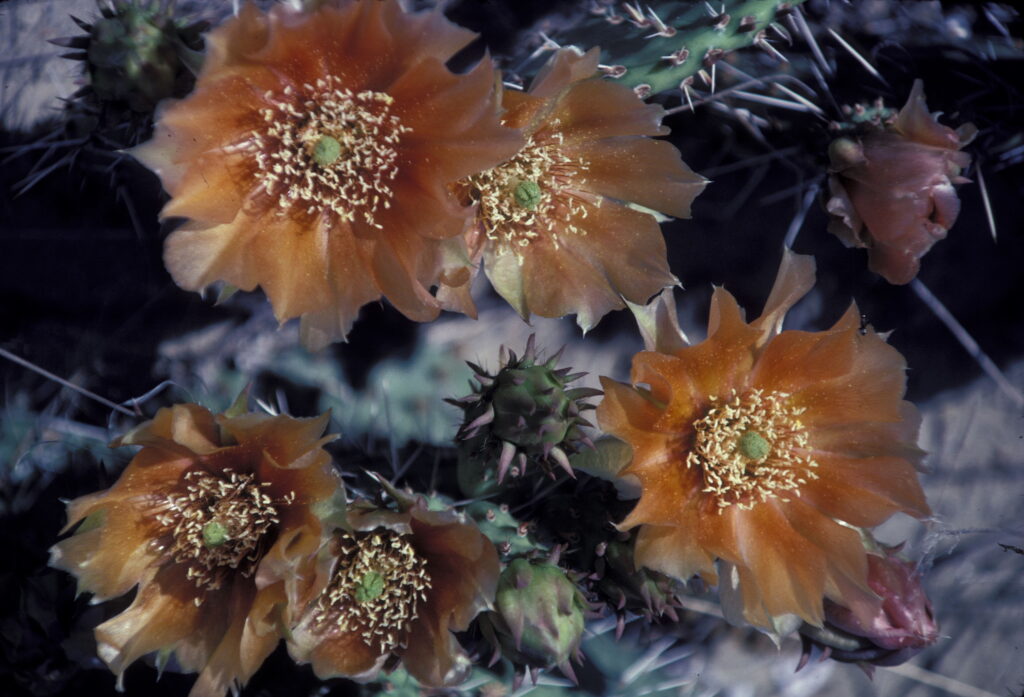
The other three species, with flattened, paddle-like stems, are the western, plains, and brown-spine (aka tulip prickly pear or desert prickly pear — which goes to show how iffy and uninformative common names can be). Prickly pears have vivid and variably colored flowers with many stamens. They always seem to have resident insects inside the petals to add to the interest.
Ball or Barrel Shaped
The rest of our cacti are ball or barrel shaped. Missouri foxtail (Coryphantha missouriensis) is a prickly barrel that shrinks inconspicuously into the ground when not flowering. It blooms in May and the fruits ripen the following spring. (Its relative, the pincushion cactus — Coryphantha vivipara — with luminous pink flowers, grows in Colorado, but not locally.)
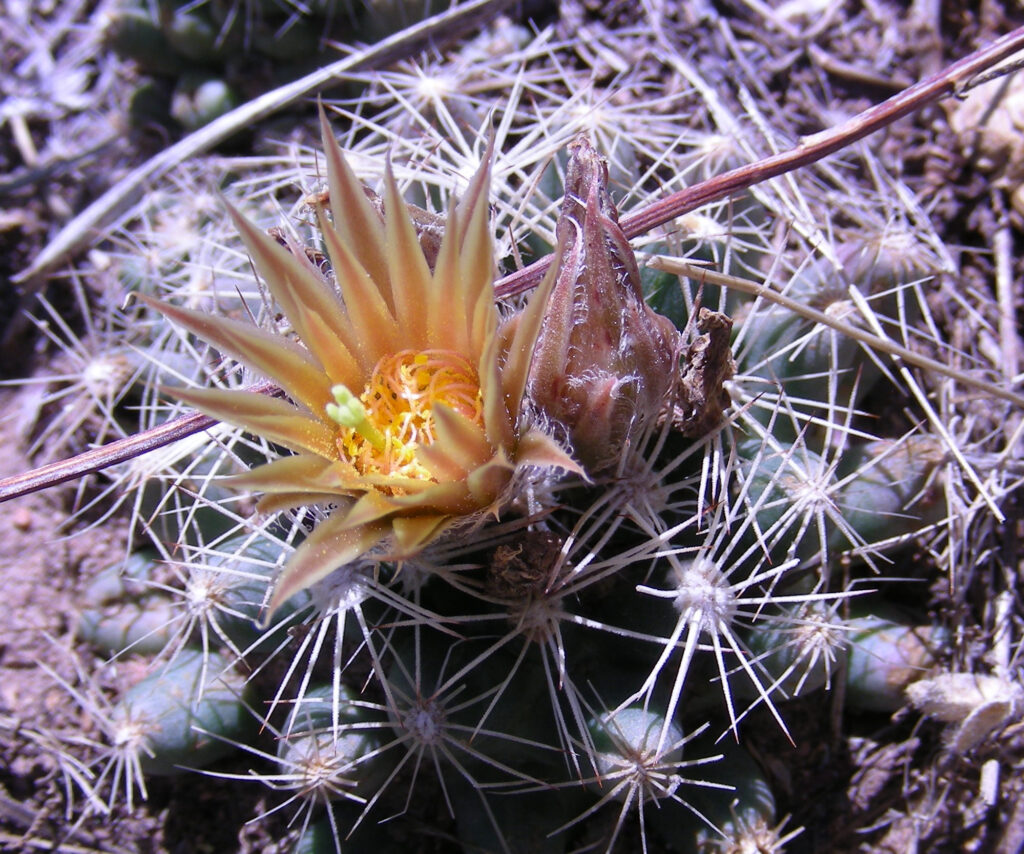
“Hedgehog” is an ongoing theme in many common names, not surprisingly. In the case of our Mountain cactus, the whole genus (Pediocactus) bears the name Hedgehog. This rounded barrel cactus has spirally arranged tubercles (small projecting elongated knobs) with pink flowers at the tubercle tips.
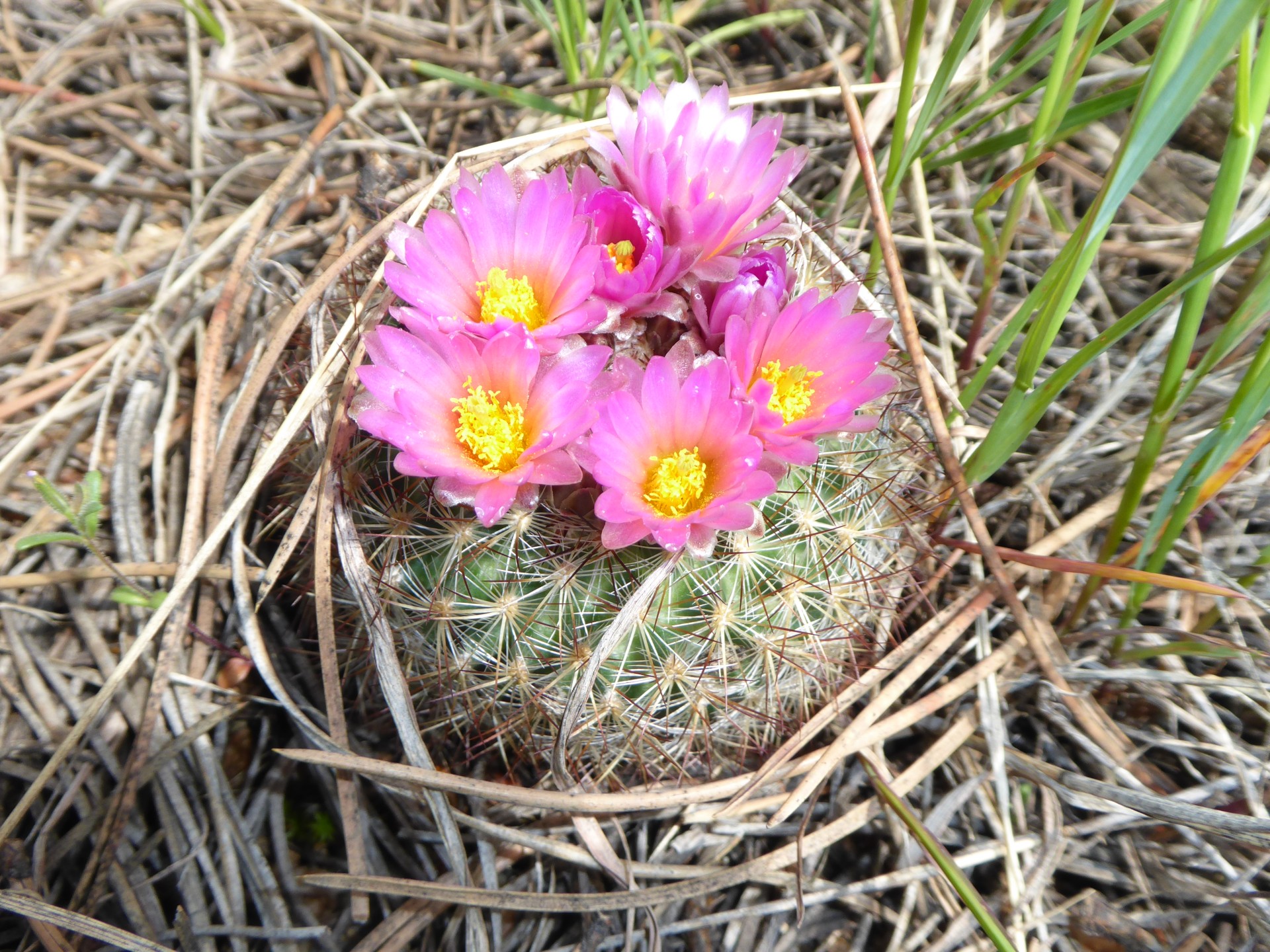
The nylon hedgehog cactus (Echinocereus viridiflorus) — now there’s a common name conundrum — is an early bloomer which boasts a mass of yellowish-green flowers below the highpoint of its clustered barrel stems. It is a joy to find an extended patch of these subtle, easily overlooked cacti in a meadow dotted with spring beauties and sand lilies.
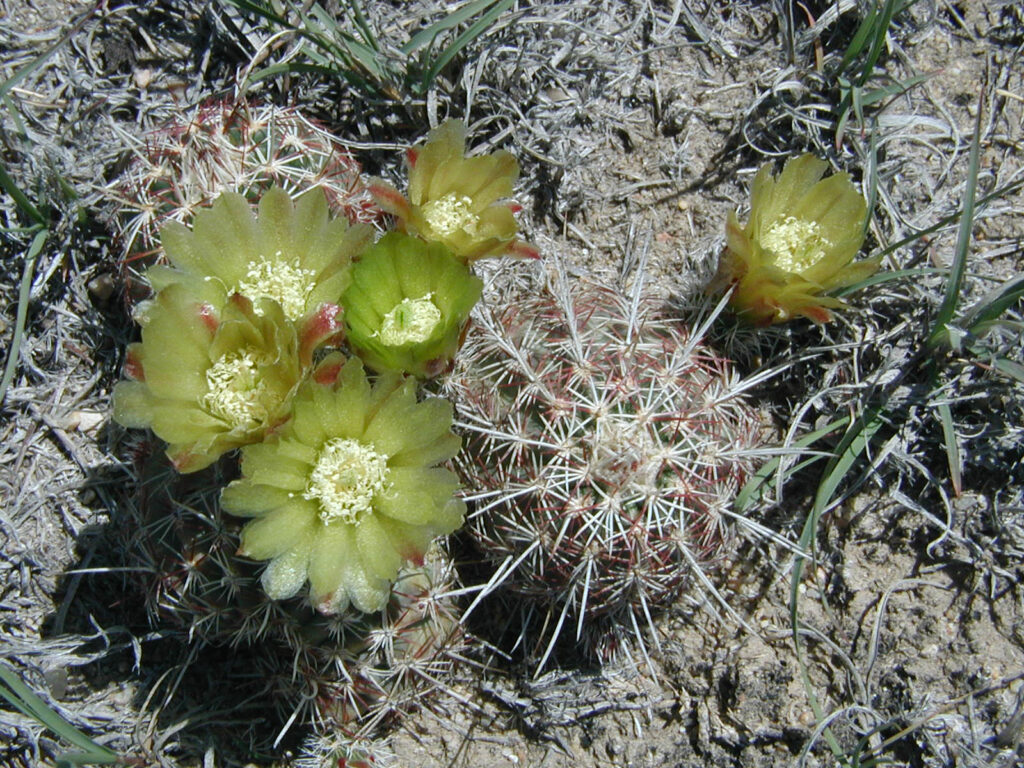
As the season changes from summer to fall, you’ll notice cacti shriveling in preparation for the cold winter months. Though they may look dead and even turn shades of orange and red, they are, in fact, alive and well. By dehydrating, they are preparing for the freezing temperatures to come. Cactus are hardy plants that thrive in our desert landscape.


